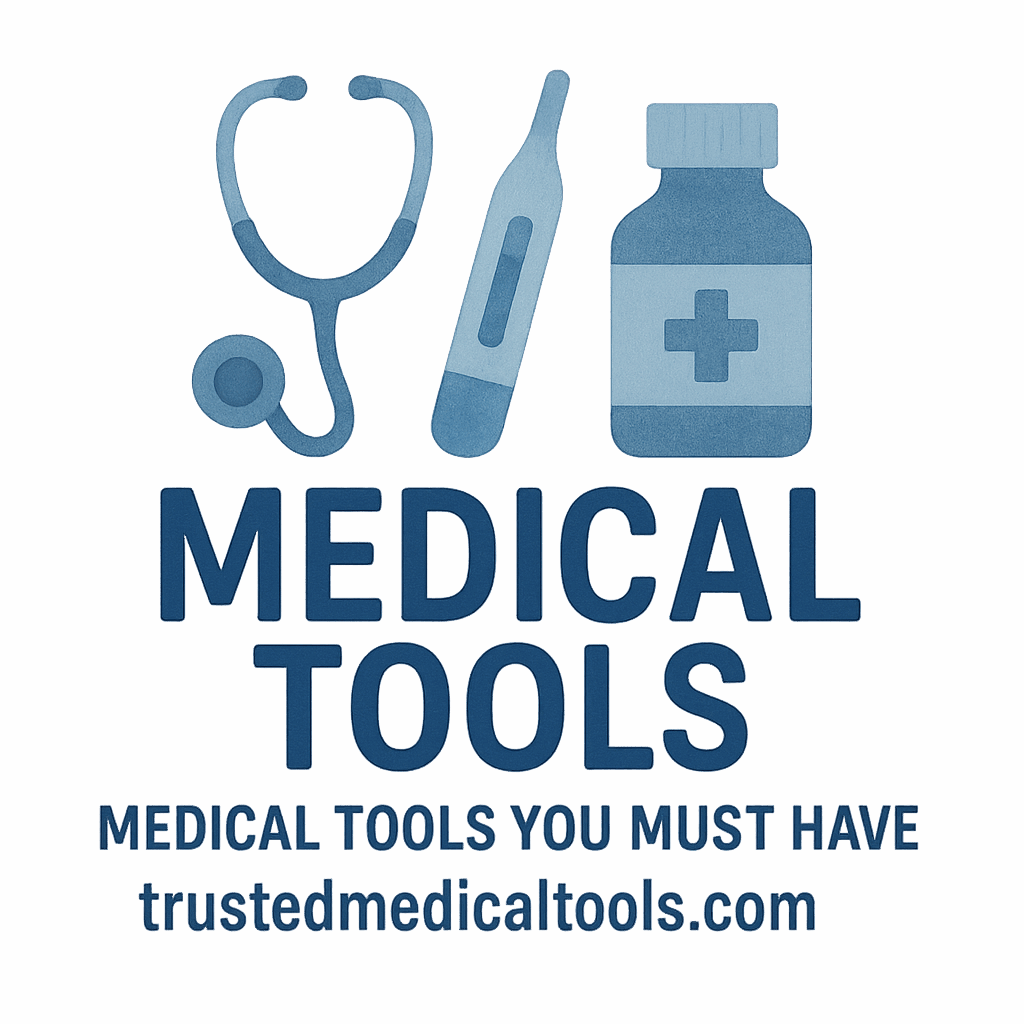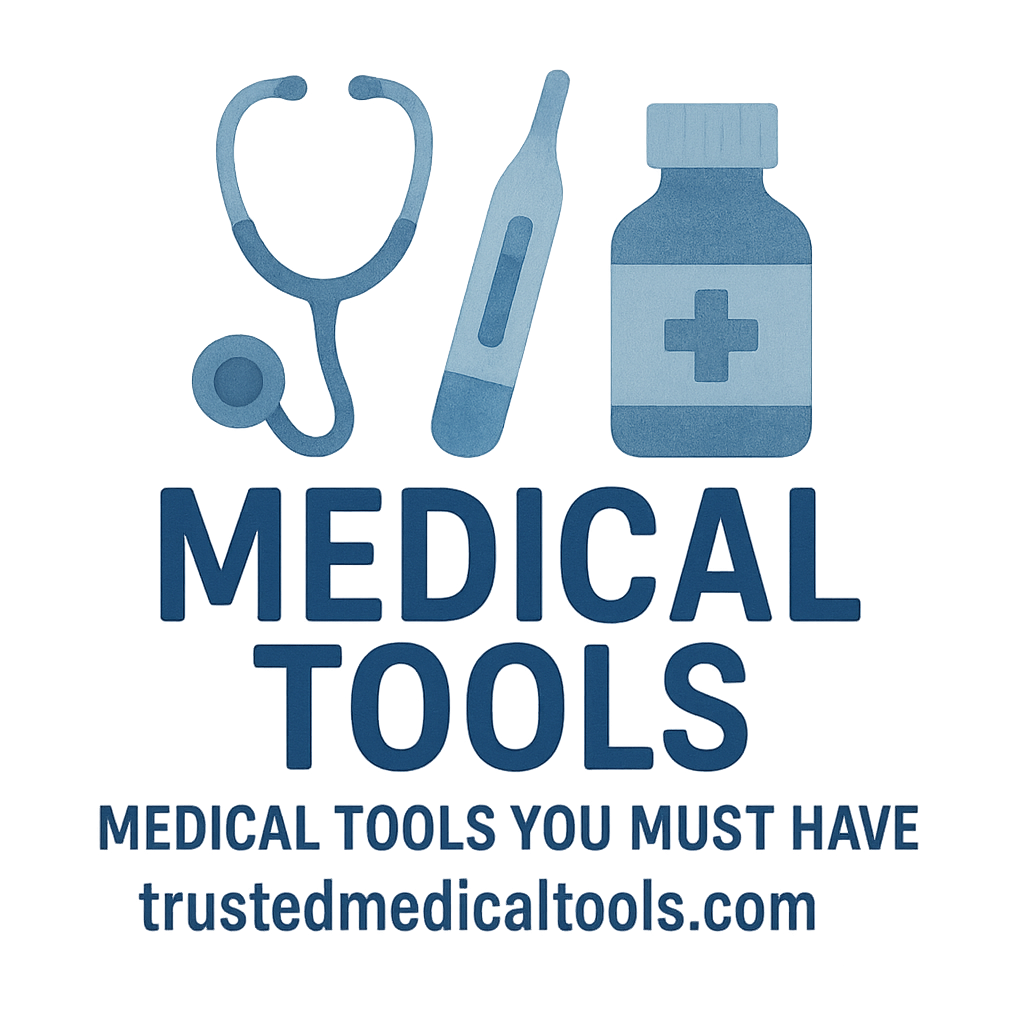Introduction: Why You Need Basic Medical Tools at Home
It’s always better to be prepared than to find yourself scrambling for medical supplies when you need them most. Whether it’s a sudden fever, a minor injury, or something more serious, having basic medical tools at home can make all the difference in responding effectively and swiftly. Keeping these tools accessible means you can manage health issues promptly, provide first aid, or even prevent more serious complications from developing.
In this guide, we’ll cover the essential medical tools every home should have. These tools are simple to use, easy to store, and can be lifesaving in certain situations.
1. Thermometer: The Essential Tool for Monitoring Health
A thermometer is one of the most basic and important medical tools to have at home. Monitoring body temperature is essential for identifying health issues such as fever, which is often a sign of infection or illness.
Why Every Home Needs a Thermometer
A fever can be a signal that something is wrong inside the body. It might be the start of a cold, flu, or more serious infection. Having a thermometer at home helps you to assess the situation accurately and determine whether you need to see a doctor.
Types of Thermometers
There are various types of thermometers available, and choosing the right one for your home can make monitoring health easier.
Digital Thermometers
Digital thermometers are the most common. They give quick and accurate readings, are easy to use, and are great for adults and children. Most digital thermometers come with memory functions and can provide readings in under a minute.
Infrared Thermometers
Infrared thermometers are a more advanced option, often used for non-contact temperature measurements. They are excellent for taking temperatures without disturbing someone, especially babies or elderly people. They can quickly provide accurate readings by scanning the forehead or ear.
How to Use a Thermometer Correctly
To get an accurate reading, ensure you follow the manufacturer’s instructions. For oral thermometers, place the thermometer under the tongue and wait for the beep. For infrared thermometers, aim the device at the forehead and press the button for an instant reading.
For more insights on healthcare tools, check out our guide on First Aid Kits.
2. Blood Pressure Monitor: A Must-Have for Heart Health
Monitoring your blood pressure is crucial for maintaining cardiovascular health, especially if you have a history of hypertension or other heart-related issues.
The Importance of Monitoring Blood Pressure
High blood pressure, or hypertension, is a silent condition that can cause damage to the heart and other organs over time. By regularly checking your blood pressure, you can catch issues early and take necessary action.
How to Choose the Right Blood Pressure Monitor
When it comes to choosing a blood pressure monitor, there are two main types: manual and digital.
Manual vs. Digital Monitors
Manual monitors, often used by healthcare professionals, require a stethoscope and more training to use correctly. Digital monitors, on the other hand, are user-friendly and provide automatic readings at the push of a button.
How to Use a Blood Pressure Monitor at Home
To use a digital monitor, wrap the cuff around your upper arm, ensuring it’s snug but not tight. Press the start button, and the monitor will automatically inflate the cuff and provide a reading. For an accurate result, it’s important to follow the recommended guidelines, such as resting for a few minutes before taking a measurement.
For other health devices, you can explore our monitoring devices section.
3. First Aid Kit: Be Prepared for Emergencies
Having a well-stocked first aid kit can be a lifesaver in emergencies. From cuts and bruises to more serious injuries, a first aid kit can help you manage situations until professional medical help arrives.
What Should Be in Your First Aid Kit?
A basic first aid kit should contain essential items like band-aids, antiseptic wipes, gauze, medical tape, tweezers, scissors, and over-the-counter pain relievers. It’s also smart to include items like a CPR face shield and gloves for safety.
How to Use Your First Aid Kit Effectively
Knowing how to use the items in your first aid kit can make a huge difference. For example, when cleaning a wound, use antiseptic wipes to prevent infection, and apply gauze and medical tape to stop the bleeding. Always read the instructions for medications and remember to keep your kit up to date.
Check out our first aid buying guide for more information.

4. Stethoscope: A Simple Tool for Listening to Heart and Lungs
While most people associate stethoscopes with doctors, they can also be useful at home for monitoring heart and lung sounds. If you or a loved one has a chronic condition, such as asthma or heart disease, having a stethoscope on hand can help you listen for any abnormal sounds.
How to Use a Stethoscope at Home
Place the earpieces in your ears and use the chest piece to listen to the heart or lungs. You should be able to hear the heartbeat, lung sounds, and any irregularities. For beginners, it may take some practice to identify normal and abnormal sounds.
Choosing the Right Stethoscope for Your Needs
There are many types of stethoscopes, ranging from basic models to advanced ones with features like noise reduction and higher sound sensitivity. When selecting a stethoscope, consider the frequency range and comfort.
5. Thermometer for Babies: Specialized Tools for Little Ones
When it comes to infants, regular thermometers might not be the best option. Baby thermometers are designed with safety and comfort in mind.
Why Baby-Specific Thermometers Matter
Babies have different temperature ranges, and some thermometers are specifically designed to handle those differences. These thermometers are also safer and easier to use for infants who might not tolerate standard thermometers.
How to Choose a Baby Thermometer
When shopping for a baby thermometer, look for features like a soft tip, fast readings, and easy-to-read displays. Digital or infrared thermometers are usually the best options for babies, as they are both quick and non-invasive.
6. Medical Gloves: An Essential for Clean and Safe Care
Whether you’re caring for someone who is ill or cleaning up after a small wound, medical gloves can help protect you from germs and contaminants.
Types of Medical Gloves You Should Have
Latex gloves are a common choice, but there are also vinyl and nitrile gloves for people with latex allergies. Make sure to choose gloves that fit snugly and provide a good level of protection.
When to Use Medical Gloves at Home
Gloves should be used when handling bodily fluids, dressing wounds, or caring for sick individuals. After use, dispose of the gloves properly and wash your hands thoroughly.
7. Bandages and Dressings: Essential for Wound Care
For cuts, scrapes, and other injuries, bandages and dressings are necessary to promote healing and prevent infection.
Why Proper Bandaging Is Crucial for Healing
Bandaging protects wounds from dirt and bacteria, helping to speed up the healing process and reduce the risk of infection. Proper bandaging also helps stop bleeding and keeps the wound clean.
Types of Bandages and Dressings You Should Stock
Stock your first aid kit with various sizes of adhesive bandages, gauze pads, medical tape, and elastic bandages for sprains. Also, consider including hydrocolloid dressings for blisters or larger wounds.
Conclusion: Stay Prepared with These Basic Medical Tools
Having these seven basic medical tools at home can make all the difference when it comes to managing health emergencies. Whether it’s taking a temperature, monitoring blood pressure, or dressing a wound, these items will help you act quickly and efficiently.
Don’t wait for an emergency to realize that you’re unprepared—equip your home with these essential tools today!
FAQs
- How often should I check my blood pressure at home?
It’s recommended to check your blood pressure at least once a day if you have hypertension or other heart concerns. - Can I use a thermometer on my baby?
Yes, but it’s essential to use a thermometer designed for babies, as they are more accurate and comfortable for little ones. - What should I include in my first aid kit for emergencies?
Your first aid kit should include bandages, antiseptics, gloves, scissors, and pain relievers, among other essentials. - Are digital thermometers better than infrared ones?
Both have their benefits, but infrared thermometers are more convenient for non-contact readings, while digital thermometers are great for precise temperature measurements. - How do I know if I need to replace my stethoscope?
If you notice a decrease in sound quality or damage to the tubing or chest piece, it might be time to replace your stethoscope. - Can I use medical gloves multiple times?
Medical gloves should be used once and disposed of properly to avoid contamination. - How do I clean and store my first aid kit?
Store your first aid kit in a cool, dry place, and check regularly for expired items or products that need replenishing.


